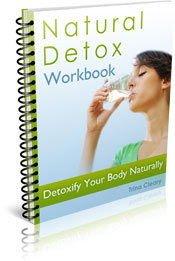|
Blenders for Smoothies12 Questions to Help You Find the Best Blender
Here are a dozen questions you should ask yourself when you are checking out blenders for smoothies. These will help you find the best blender for your needs and budget. The bottom-line for most people in their hunt for the best blender is just that, the bottom-line. Ideally you’d like to spend as little as possible and still manage to meet your basic blending requirements. Ask yourself these questions if you want to find a blender that suits you for the lowest possible price. Frequency: How often will you be using your blender?If you’re blending 1-2 times a week or less then you may feel comfortable sacrificing some level of performance in order to save money. A blender that is only for occasional use doesn’t need to be as durable or fast working, so you can compromise a little on the quality of components and motor speed.However, don’t make the mistake of purchasing a completely useless blender that can only be used twice before it burns out or cracks! I’d say the minimum you should spend on a blender for smoothies you’ll use at least weekly is about $100. You should then get at least a year’s use out of it before you need to re-invest or upgrade. If you’re blending daily or more, you can save yourself significant amounts of time and angst by investing in a more powerful blender. A better quality blender will cut down your processing time each day. (It shouldn’t take more than 30 seconds to produce a truly smooth green smoothie.) Not only that, a better quality blender will last longer despite the more frequent use. I would recommend spending at least $200 to get a strong blender with a decent warranty, at least on the motor. Texture: How fussy are you about ‘bits’ in your smoothies?What consistency smoothie do you expect your blender to produce? Tougher greens like parsley and silverbeet don’t blend completely into liquid in the cheaper blenders for smoothies. Cheaper blenders can still do a fine job making purees, but your smoothies will tend to be a little ‘bitty’.If you don’t mind chewing a little as you drink your greens, then you can save yourself some money. However, this will be a false saving if you never use your blender at all because the smoothies it produces aren’t as creamy as what you’re after. To produce liquids, you basically need a more powerful blender. That is, a higher wattage motor.... at least in excess of 700 watts, and if you can afford it then more than 1000 watts. To give you an idea where top-end blenders rate, the Vitamix uses 1380 watts and the Blendtec kicks butt with 1500 watts. Respectable mid-range blenders like the Kitchen Aid 5 Speed and the Waring Pro MegaMix HPB300 use 700 watts and 745 watts respectively. (My Sunbeam PB9600 chews through 2000 watts... it works quickly and effectively but it’s loud!) Ease of Use: Do you want a blender jug you can take apart to clean?Your blender should be easy to clean without disassembling, but sometimes you will need to remove the blades to clean away sticky nut butters or thicker mixtures. I don’t have to take mine apart very often because I clean it straight after I use it with a whizz of warm water and a little detergent. When I do have to take it apart I appreciate that it’s easy to disassemble, wash the parts separately and put together fairly simply.Materials: Do you prefer glass, plastic or stainless steel blender jugs?Glass jugs are heavier to handle but less likely to scratch. I find that plastic (polycarbonate) jugs are much easier to use but can pick up small scratches over time. The tiny scratches don’t bother me and they don’t affect the operation of the blender. If you do choose plastic, get one that’s BPA-free. A plus for glass and plastic jugs is that the contents are visible and you can use the volume markings on the side of the jug.Some blenders have stainless steel jugs that appeal to some people’s tastes, but you can’t see the contents easily to check volume or progress. Storage: Where are you going to keep your blender?Are you going to keep your blender on the bench top or in the cupboard? If you have limited space then size might be a factor. Note that most well-used blenders do end up sitting permanently on the bench – it’s much easier than unloading and putting them away every day. If you invest in one of the best blenders for smoothies you are most likely to end up loving it and be quite happy to have it in sight anyway.Glamour: Do you want a funky looking blender?This question is related to the previous question about storage location. You might like to consider how your blender looks, particularly if your blender is being kept permanently on your kitchen bench top. This isn’t something I care about personally, as long as the blender isn’t downright ugly, but there are some good blenders available that also come in funky colours or hi-tech designs. For example, the Kitchen Aid 5 Speed blender comes in several bright colours and is an excellent blender in its price range. The renowned Vitamix CIA Pro is available in ruby and onyx and looks almost regal, whereas Blendtec blenders have a Star Trek appeal due to their LED display and rocketship base. The Waring Pro MegaMix HPB300 also looks like it’s about to take off, and its bench top footprint is comparatively small.Features: What other jobs do you want your blender to do?Do you want to crush ice, heat up soups or grind grains? Check that your blender has the ability to do the jobs you want it to do.I consider crushing ice a necessity, because often you’ll want to blend frozen fruits such as bananas and berries into your smoothies. Heating up soups doesn’t seem so critical when you can simply add some hot water, but if you want to grind grains and nuts an extra ‘dry blade’ attachment is sometimes needed. This is a job you can do in your food processor though, so if it adds too much to the price tag of your blender it’s not really worth it. Capacity: How much volume do you need for the recipes you make often?I’d suggest you’ll quickly become frustrated with a blender that holds less than two litres. That’s about the same as two quarts, or half a gallon. The Blendtec and Vitamix both qualify here whilst the Kitchen Aid 5 Speed rates a bit lower with 20% less capacity (56oz). The Waring Pro MegaMix HPB300 holds 48 oz.Parts: Does your best blender selection have good quality parts?Make sure that the lid seals really well. Plenty of cheaper blenders let contents leak and overflow through gaps in the lid.Using a tamper that’s fitted correctly to your blender’s lid is a safe and effective option. A tamper is a kind of paddle you insert though the lid to push ingredients further into the blades. This helps when ice or larger chunks of food aren’t getting caught up and blended properly. Some blender designs claim that they work so well you won’t need a tamper, but you’ll probably end up poking the end of a wooden spoon into your blender to push stuff down at some point. Noisiness: How loud can you stand it?I haven’t come across a blender that is both powerful and quiet and affordable yet! If I did I would probably be first in line to buy one. Vitamix has a 1000 watt blender called “The Quiet One”, but it costs more than $1000. Ouch!Lower wattage blenders (300-400 watts) tend to be much quieter but of course they don’t do the job very well. In the meantime, teach your kids to cover their ears or leave the room while you blend, and get your industrial ear muffs on! Extras: Are you being swayed by the ‘freebies’ that come with it?Admittedly, DVD cooking classes and blender recipe books do add up in value. However, if you’re resourceful and have the energy and time you can find a lot of similar information on the internet.Warranty: How long will it be before you have to buy a new blender?In my experience, the extent of the warranty tends to be a reasonable indication of the quality of the blender. Cheapies will have a 3 or 6 month warranty – or none at all. At the opposite end of the spectrum the Blendtec and Vitamix both have 7 year warranties. The Waring Pro MegaMix HPB300 has a 5 year warranty on the motor (1 year on the rest of the machine) and the Kitchen Aid 5 Speed has a 1 year warranty.Caveat Emptor: Blenders for SmoothiesSome blender review sites are excellent sources of well-researched information, whereas others are only after your click to buy. If you know the specific criteria you’re looking for, you can do your own research.Once you narrow down your list to 4-5 options, check out user reviews from people who have already invested in each of the blenders for smoothies you’re considering. There is no better source for uncovering consistent problems with a blender model, for example motors that burn out within two months, jugs that crack with daily use or blender housings that leak a rusty brown goo! Articles Related to Best Blenders for Smoothies:
|
Are you as healthy as you can be?
Take action to lift your energy and vitality levels beyond recognition.
Focus on
building healthy eating habits for just one month with
Veg Up and you’ll enjoy the effects for years. You will amaze yourself when you see how much more you can achieve.
More Growing Raw
Newsletter
Be sure to subscribe to "More Growing Raw" newsletter to receive monthly healthy eating tips, Growing Raw news and updates.
Most Popular Articles
- Green Smoothie Health
- Raw Food Health Levels
- Growing Vegetables in Containers
- Healthy Eating Plans
- List of Healthy Food to Always Eat Organic
- Growing a Vegetable Garden in a Polytunnel
- All Natural Detox Diet
Does your body need a fresh start?
Brighten up with all natural detox routines that give your body a cleansing push towards healthier patterns.
Learn how to
detoxify your body naturally. Your body is smart enough to clean itself without expensive detox pills and potions.








